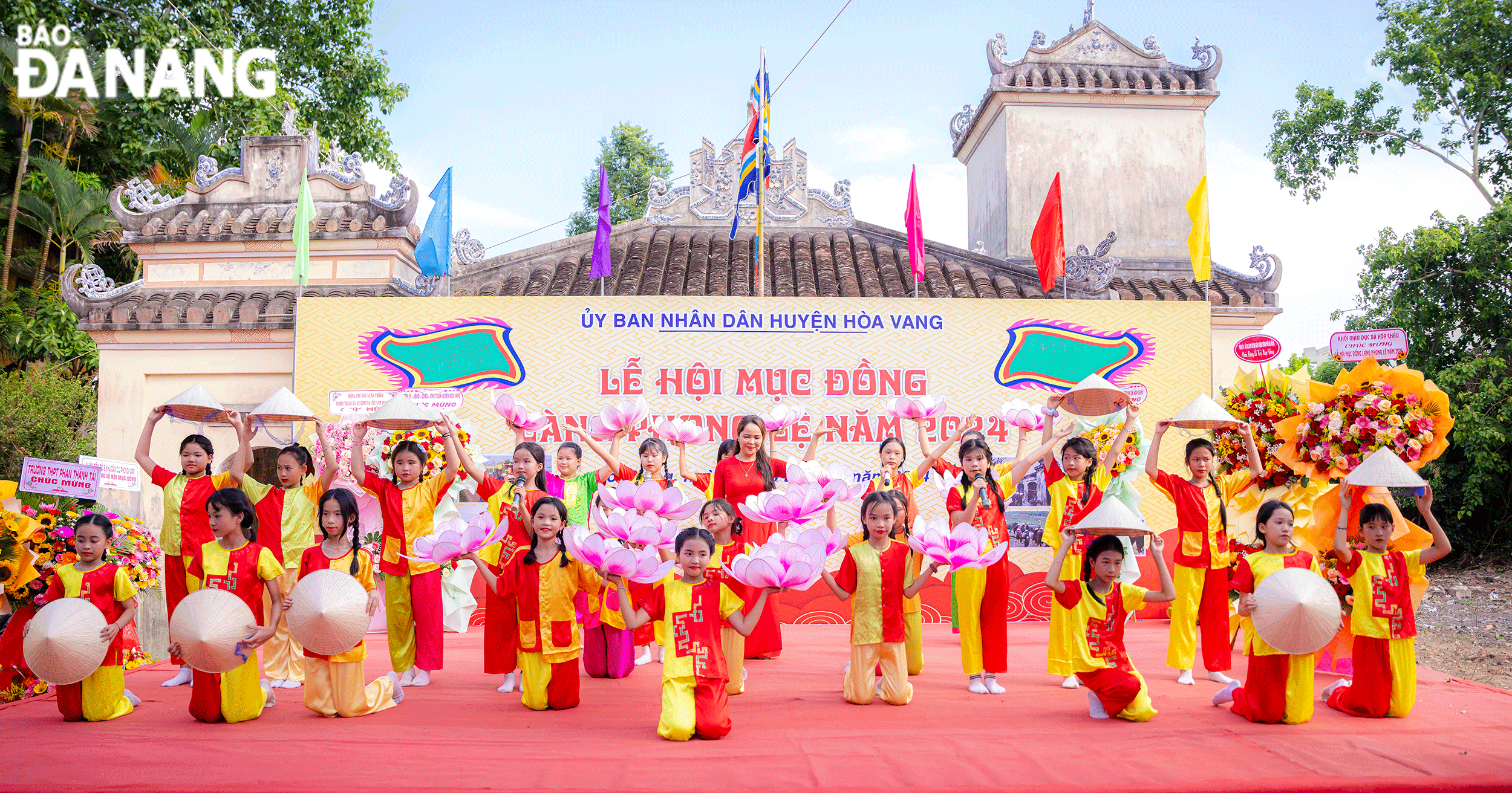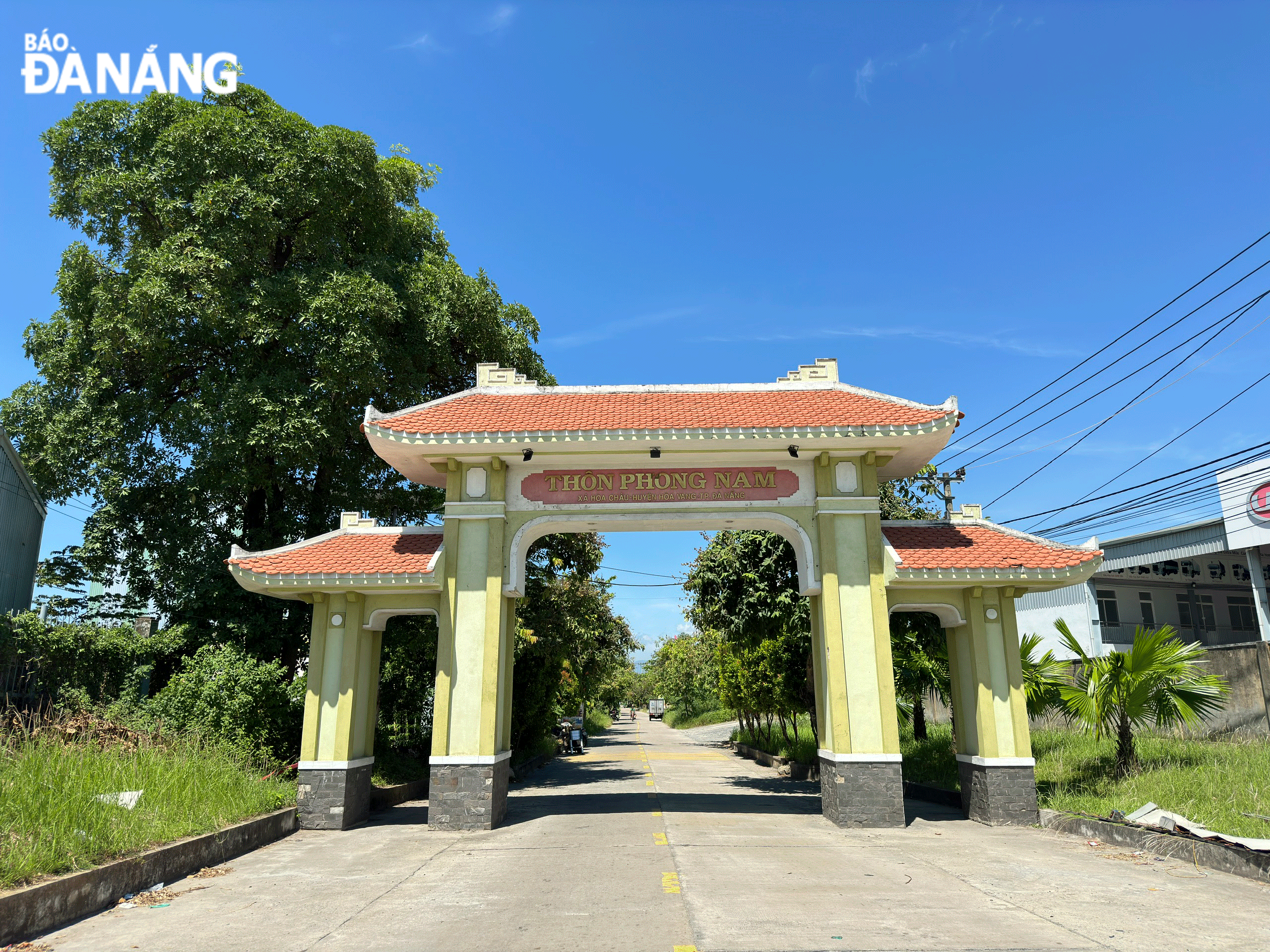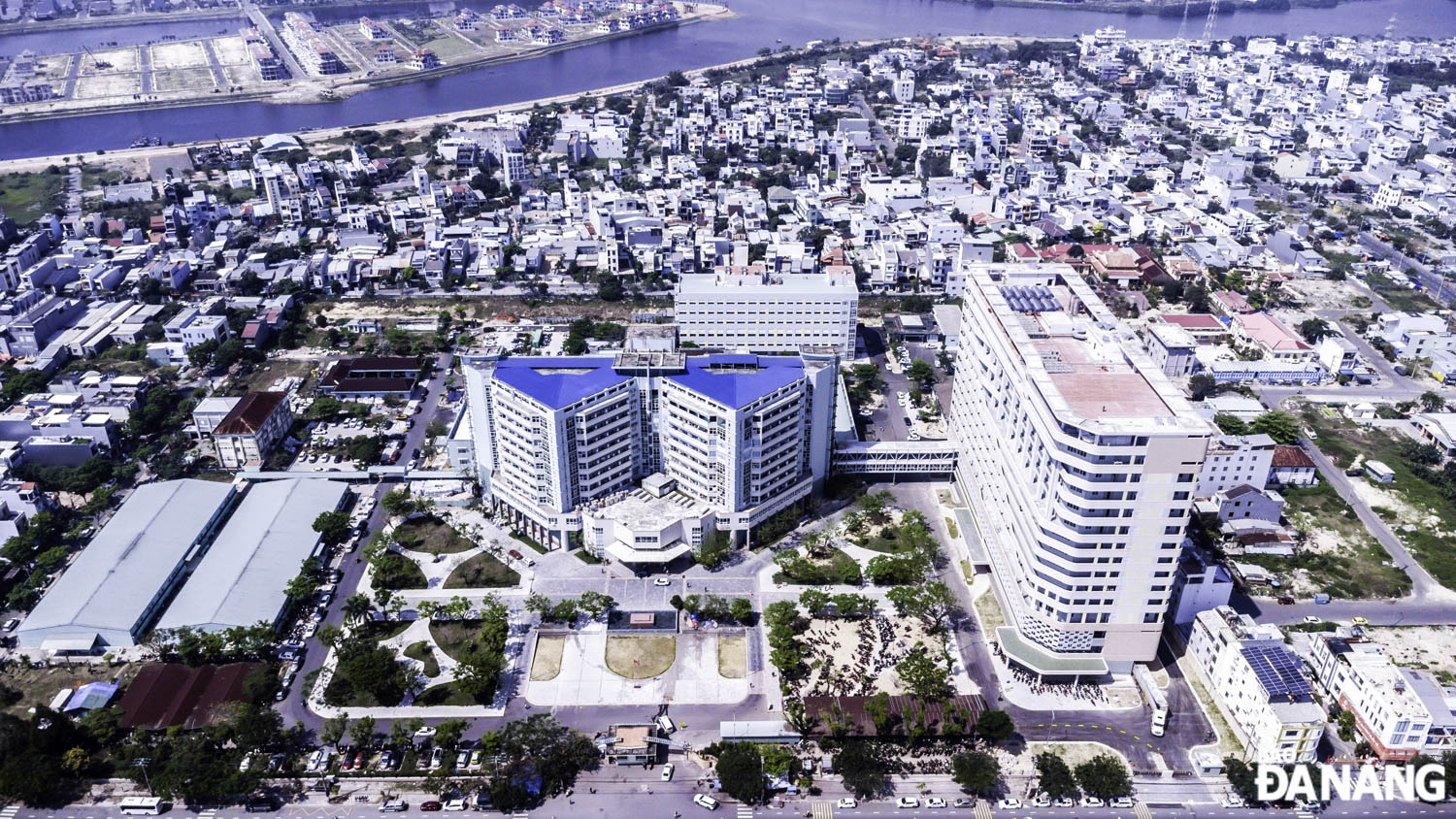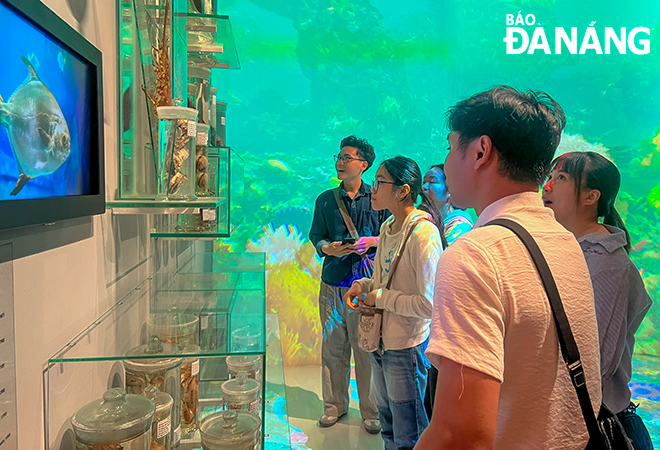Building typical cultural villages in Da Nang's suburban district
In Da Nang’s Hoa Vang District, Phong Nam and Bo Ban villages have a rich history, long-standing traditions, and a peaceful, agricultural community. They are expected to be developed into "typical cultural villages", aiming to implement new-style rural development, enhance the people's economic life based on the villages’ cultural heritage, and preserve traditional values.
 |
| The Muc Dog Festival is a distinctive and unique cultural feature of Phong Nam Village, Hoa Chau Commune, Hoa Vang District. Photo: KIM LIEN |
Bo Ban Village lies to the east of Hoa Phong Commune, with over 2,000 inhabitants, primarily engaged in farming. This village was established in the late 15th century by pioneers from Thanh Hoa and Nghe An who migrated south to cultivate the land.
Although the village is not large, about 185 hectares, it is a heroic land with a tradition of resisting foreign invaders. Notably, it is famous for the Bo Ban communal house, a national-level architectural and artistic relic, which is well-known to many.
Mr. Tan Kim, Head of the Fatherland Front Committee of the Bo Ban Village and caretaker of the communal house, stated that Bo Ban communal house is not only a cultural institution and a typical traditional architectural-religious structure but also a place where many important historical events took place during the August Revolution of 1945 in the locality. Adjacent to the Bo Ban communal house are the Than Nong temple, Am Linh temple, the stele commemorating the battle at Xom Dinh, and ancient wells, creating a complex of relics rarely found elsewhere. Additionally, the village still has four ancient houses, dating back 100 to 200 years, which the residents have well preserved.
To become a "typical cultural village," Bo Ban Village boasts a system of valuable relics and cultural institutions and has unique natural conditions, lifestyles, and village cultural identities.
Bo Ban Village’s Head, Mr Tan Van Thach, said that the village consists of eight hamlets that live harmoniously and are closely united. For generations, the "village's affection" has always been valued by the villagers. They collectively create village rules, specifying what should and should not be done to remind and guide each other. Nowadays, the village has a "democratic convention" also developed through collective discussion to build the village's cultural life. The villagers also bond in production, exchanging and supporting each other with any farming or breeding experience they acquire, a beautiful tradition of the village.
"With the project to develop Bo Ban into a 'typical cultural village' of Hoa Vang District, the villagers are very pleased and supportive. This project benefits the villagers, giving them more opportunities to develop economically while, above all, preserving the village's cultural identity and maintaining the traditional rural character," Mr Thach shared.
 |
| Phong Nam Village in Hoa Chau Commune, Hoa Vang District, has a long history and is a densely populated community, with most residents engaged in agriculture. Photo: X.D |
Similarly, Phong Nam Village has a long history and a large population, mostly engaged in agriculture. This place is famous for the Phong Le communal house and the unique Muc Dong Festival. This ancient village has preserved the traditional rural landscape with lush green fields, a village gate beside an old banyan tree, green bamboo hedges along the village road, and ancient wells beside old houses.
According to Mr. Ngo Tat Hien, Head of Phong Nam Village, the village is part of the old Phong Le Village. For generations, the people of Phong Nam have valued humane behaviour and the harmonious and kind lifestyle of a purely agricultural village. Phong Nam is also famous for its speciality “banh it la gai”, a kind of traditional cake, and the renowned crispy rice paper, contributing to attracting visitors to the village.
"The people of Phong Nam are very supportive of the proposal to develop the village into a ' typical cultural village'. Deep down, they most wish to preserve the peace and rural charm of the village, limit urbanisation, and maintain the ancient architectural works, long-standing customs, and traditional festivals to pass on to future generations" Mr. Hien expressed.
According to the People's Committee of Hoa Vang District, developing "Cultural Villages" in Phong Nam and Bo Ban is an important political task, contributing to the successful implementation of the tasks set out in Resolution No. 07/NQ-TU of the Standing Committee of the municipal Party Committee on the construction and development of Hoa Vang District by 2030, with a vision to 2045.
This aims to build Hoa Vang with its unique identity, aligning with the general planning of the city, enhancing the quality of life of the district's residents to a high level, ensuring national defence and security, preserving national cultural identity, and developing urban areas while maintaining traditional agriculture and rural areas, and preserving and promoting the value of historical relics.
To implement the project, the district will renovate and refurbish newly constructed architectural works that do not fit within the ancient village's space. The investment will be made in preserving and restoring historical and artistic relics, parks, walking gardens, and cultural and sports institutions in the area.
In particular, efforts will be focused on restoring and preserving the greenery system; developing infrastructure, and green spaces; and creating a harmonious rural landscape between architecture and the environment with its distinct character.
Additionally, tourism activities will be promoted with a wide range of products suitable for different age groups and the needs of visitors to Phong Nam and Bo Ban villages.
| The project to develop Phong Nam and Bo Ban into "Typical Cultural Villages" by 2030, with a vision to 2045 has a total estimated budget of over VND 89 billion. Its goal is to preserve and promote cultural values and traditional beauty, enhance the material and spiritual life of the people, and align with the criteria for "advanced new-style rural communes" and "model new rural communes" with the distinctive characteristics of the local area. |
Reporting by THIEN DUYEN - Translating by TRUC VY








